Stone, just like stones step-by-step tracks, appeared thanks to . IN evening time they illuminated the path for the guests, which led them through the garden to the tea pavilion.

Lanterns are usually located on the bends of paths, near bridges, waterfalls or bamboo ponds. They should be installed at an angle to the center line leading from the house, and never where this is not due to functional necessity.
Depending on the design
The following types of flashlights are distinguished:
"Tachi-Gata"- lights on a pedestal big size(from 1.5 to 3 meters) are used mainly in large gardens.
"Ikekomi-gata"— are buried directly in the ground near bamboo ponds, but will look good anywhere in the garden.
"Oki-gata"- the smallest lanterns are installed along paths or in a very small courtyard.
"Yukimi-gata" (snow)– the most commonly used flashlights are installed near ponds and waterfalls. They are called snow for their ability to hold snow on a wide top cover, making the light reflected in the water look especially picturesque.

Sometimes these flashlights are installed on a high curved leg, which allows you to bring the flashlight as close as possible to the water surface of the reservoir and thus increase the effect of light reflection.


Japanese paper lanterns Chochin

Paper lanterns "chochin"- a traditional form of lighting in Japan. They are made from corrugated paper, neatly glued to the bamboo frame.
These are usually lit and hung on a cornice at the entrance to a building, especially in restaurants and hotels.
The custom of using Japanese lanterns appeared along with Buddhism at the end of the 6th century. And the technique for making them has not changed for 300 years. Much of the work is done by hand by artisans who have dedicated their heart and soul to creating these beautiful pieces. 
The Japanese have a deeply rooted tradition of not wasting anything. This also applies to broken things - they try to fix them and use them for as long as possible. That's why they're fragile paper lanterns can serve for years, repaired by the hands of a caring craftsman and given a new life.
Archives
Designers have been carving traditional Japanese lanterns and original stone lamps of their own design from granite for 20 years. If you are looking for interesting garden decor in traditional Japanese style, or want to choose a more modern one yard decoration and an addition to your landscape, then lanterns highest quality Stone Forest is a great solution.
Traditional Japanese lanterns are made to strict ancient specifications. During the day it is an elegant decoration for decorating the garden, and in the evening, with a candle inside, the lantern performs the function garden lighting playing lights, indicating the path to the tea gazebo, pond or house. The assortment includes all main types of lanterns.
"Tachi-gata"(translated from Japanese as “pedestal”) - the definition already includes the purpose of such lanterns. They are used to illuminate the place in the garden where the owner talks with the most honored guests. Tachi-gata lanterns are distinguished from other types of lanterns by their large height - from 1.5 to 3 m, so they look natural in gardens that occupy a large area.


"Ikekomi-gata"- there is a legend according to which this lantern is positioned so that the ray of sunlight falling on it is necessarily directed towards the ground. Therefore, areas of the yard and garden that are open to the sun are usually chosen for installing ikekomi-gata lanterns.
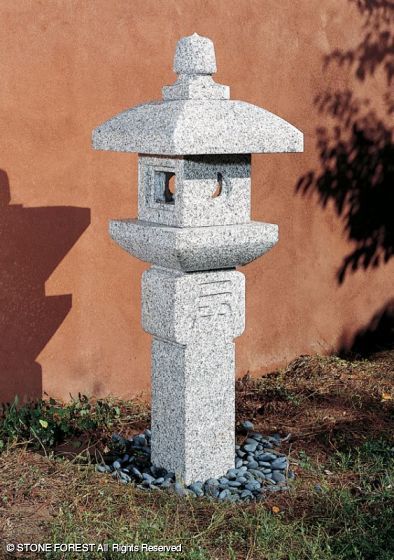


"Yukimi-gata" - translated as “seemingly covered with snow.” The highlight of these stone lanterns- square roofs or round shape, protecting the fire inside from the snow. Often the lantern windows are closed frosted glass, which gives a soft glow to the rays of the sun hitting the lantern and candles in the evening.

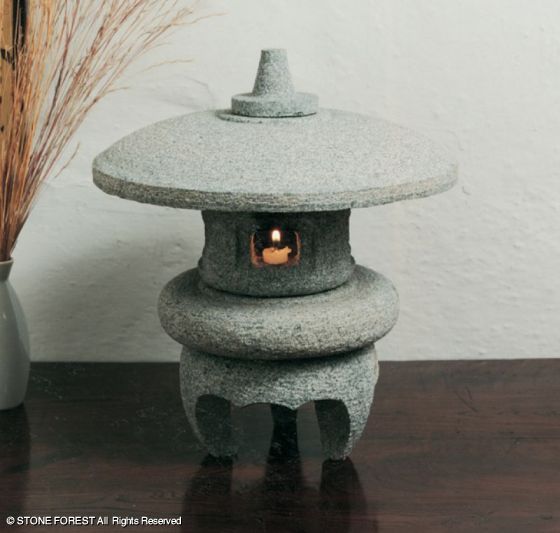
There are the following main types of japanese lanterns:
Andon
Chotin
Japanese andon lantern.
Andon- This is a lantern with a paper lampshade, the body of the lantern is wooden or metal. The light source is an oil wick that burns in a stone or ceramic lamp. Most andons have a vertical shape, some have drawers at the base and carry handles at the top.
Chotin differs from the andon in design; the cylindrical lampshade of the tetin is held in place by a bamboo spiral. The chotin also has a handle at the top. Akatetin is a red lantern that is hung near drinking establishments.

The artist paints Japanese chochin lanterns.


Japanese toro lantern.
Thoreau- This is a stone or iron lantern. Toro is used to illuminate elements of Japanese buildings.

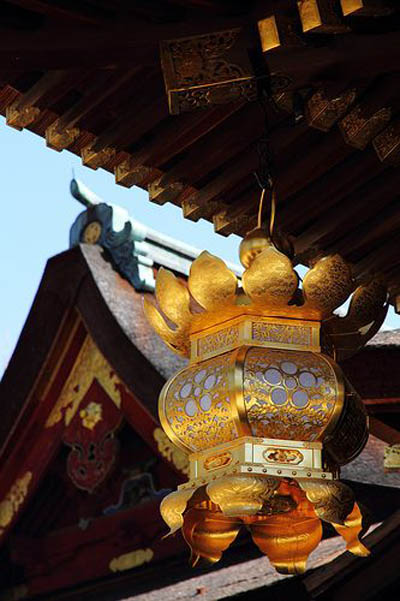
Bronze Toro lantern.
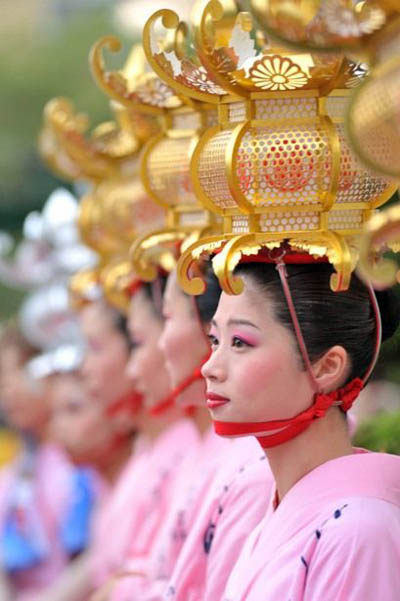
Japanese lantern pagoda.
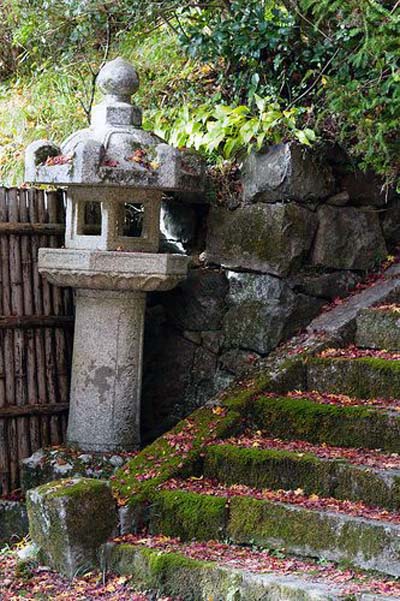
Toro stone lantern.
Japanese lanterns or lamps in a modern design.
Japanese lanterns are often used to create Japanese-style interiors, often becoming objects of creativity, particularly in the field ofhand made.
I’ll give you photos of similar lanterns from the Internet, they will again enrich you with ideas and perhaps push you to creativity. Most of these are homemade Japanese lanterns can be classified as the Andon and Chotin types. By the way, it is more correct for modern design Japanese lanterns name Japanese lamps or lamps.


DIY Japanese lamp.

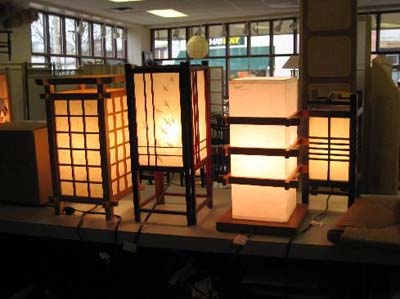
Japanese lamps of various designs.
![]()
Japanese Toro lanterns (pronounced To-ro, with emphasis on each syllable) are considered a staple of the Japanese garden.
Lanterns came to Japan, like many other things, from China, where their predecessors were cauldrons for cooking animal meat, which gradually evolved into vessels for burning aromatic herbs and into lighting devices.
But, unlike the Chinese, the Japanese began to make them not from metal, but from stone.
The prototypes of Thoreau's lanterns were the ritual incense burners that were placed in front of the Buddha's hall.
At first they were used as ordinary portable lamps and placed for illumination along the roads leading to the temple.
During the Muromachi period, Japanese lanterns became widespread. At the same time, the culture of tea ceremonies was rapidly developing among the Japanese.
According to the rules of the ceremonies, tea drinking was to be held in special tea gardens, which were decorated with Japanese Toro lanterns.
Since then, the Japanese lantern has ceased to be an exclusively religious attribute and has gradually evolved from a lighting device into a sculptural decoration and an important symbol of Japanese culture.
A distinctive feature of Japanese lanterns is their unusual shape, variety of shapes, patterns, and decorations.
In Japan you can find lamps of both regular and ornate shapes.
Nowadays, five types of Japanese Toro stone lanterns are mainly known: Yukimi, Oribe, Kasuga, Yamadoro, Oki. Each of them has its own unique appearance and is associated with a certain historical period, garden style, as well as the place of first production, famous personalities and many others.
Oribe-toro - or Master Oribe's lantern, has a very interesting legend regarding its origin. Legend has it that the tea master Oribe lived in one of the Buddhist temples in early XVI century. In those days it was dangerous to profess Christianity, but Master Oribe was a Christian, and he carved a crucifix into the lower part of the leg of the stone lantern.
This part of the lantern was always covered with plant leaves. Since Oribe was a tea master, the lantern was located next to the stone tsukubai bowl from which water was taken for the tea ceremony.
According to tradition, the tea master approached the tsukubai and knelt on the stone in front of him, facing the lantern standing behind the bowl. No one could suspect Master Oribe that at that moment in the Buddhist ritual he was turning to his god.
It’s hard to say now whether this is true or not, but the lantern of master Oribe with a bas-relief in the form of a very conventional human figure in the lower part is always placed next to the tsukubai, not far from tea house. The lower part of the lantern support is buried in greenery, hiding from view what is depicted on it.
Kasuga-toro is a lantern on a round support with carved ornaments on the lamp stand, as well as in the upper and lower parts of the support itself. The strongly upturned corners of the hexagonal roof indicate its connection with southern Japanese or even Chinese culture. It is often placed opposite or next to the entrance to a house or gazebo, and such lanterns can be a symmetrical pair.
Yamadoro-toro is a lantern made of roughly cut stones. It is frankly asymmetrical and appears ancient, rooted in the ground and covered with moss. Its height does not exceed 1 meter. The tetrahedral chamber of the lamp has one through round hole. Placed in damp and dark corners of the garden, ideally if it becomes covered with moss and lichen over time.
Very good in compositions with the same roughly processed stone curved bridge over a stream, in a place where tree branches and tall bushes form twilight even on sunny days.
Oki-toro is the smallest. This lantern, like all its brothers, has a clearly defined place in the garden. The Oka lantern is installed on pebble shallows in reservoirs or on the edge of very small ponds.
This type of lantern has no support at all, sometimes even a lamp chamber stand or a supporting stone. Its total height does not exceed 40 cm, but can be even less, depending on the size of the reservoir and the shallows where it is installed.
Yukimi-toro - “lantern for admiring snow.” The most common type of lanterns.
It differs greatly from all other stone lanterns flat roof. The birthplace of this lantern can be determined by its name: an area where snowfall seems to be a very rare phenomenon, which prompted the Japanese to create a Japanese lantern with a large flat roof, on which the snow would not melt so quickly, and one could have time to admire it.
Such lanterns usually have three or four supports, which are buried in the ground or rest on a large coastal stone.
The Yukimi lantern is most often placed on islands where pines or junipers grow, on rocks overhanging a body of water, on steep headlands, but always near the water, so that it also has the opportunity to be reflected.
The first Japanese lantern, however, not a stone one, but a bronze one, was brought to Russia after a trip to Japan in 1891 by Tsarevich Nicholas (future Tsar Nicholas II). This lantern was presented to him in one of the temples in Kyoto, delivered to Russia, then kept in the collection of gifts from the court, and in 1903 it took a place in the Hermitage collection.
Do you want to decorate your garden with original lanterns? What if we borrow them from Japanese style? Neat, compact, they can fit into a design very interestingly.
In Japan, such lanterns were previously installed to illuminate paths leading to temples. Now they can be seen almost everywhere. And, of course, what would a Japanese kindergarten be without them? Here they play the role of unique beacons indicating the way to the tea pavilion.
There are several types of Japanese lanterns, varying in shape and height.
Some of the highest ones are called “tachi-gata”. In Japanese kindergartens they are installed in the central part of the path. There they play a role main figure. The lanterns are elongated, resemble columns in appearance, their height is from 1.5 to 3 m.
“Ikekomi-gata” - also in the form of columns, but smaller in size. They decorate the banks of ponds or streams. They dont have broad base, they (like pillars) are buried in the ground.

"Oki-gata" are the smallest lanterns. Their place is along paths, among plants and in small courtyards.
“Yukimi-gata” (snow) are the most popular. They are installed near ponds and waterfalls. They are called snowy because of the rather wide roof on which snow lingers. The light emanating from under the roof is reflected in the water and makes the path to the tea pavilion especially picturesque and mesmerizing.
Sometimes these lanterns are “placed” on a high curved leg, which allows them to be brought as close as possible to the surface of the reservoir and thus increases the effect of light reflection.
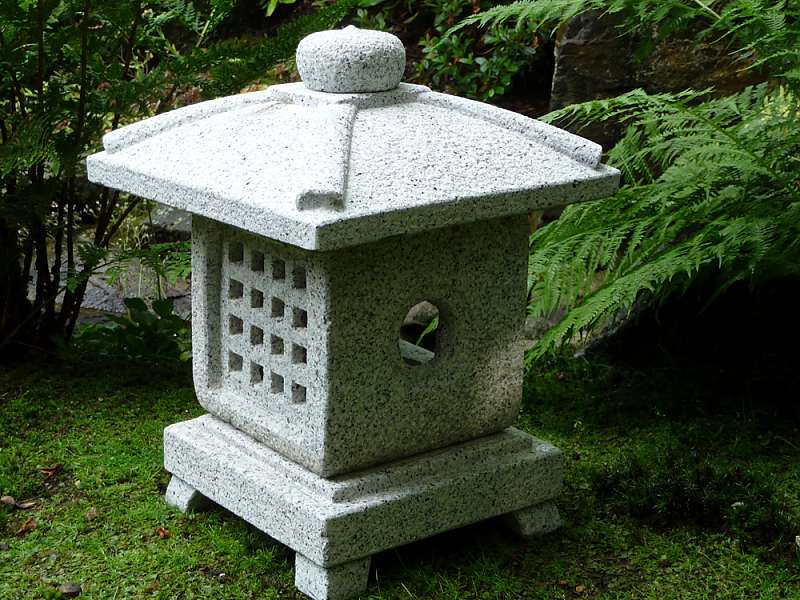
Is it possible to make Japanese lanterns with your own hands? Of course, although this is not an easy matter. I have two types of lanterns in my garden: tachi-gata (120 cm high) and yukimi-gata (50 cm high).
Classically they are made of metal and stone. If you choose the latter option, it is better to take a soft stone, such as sandstone. But personally, I chose a simpler method and used a structure close to natural stone...gas silicate block.
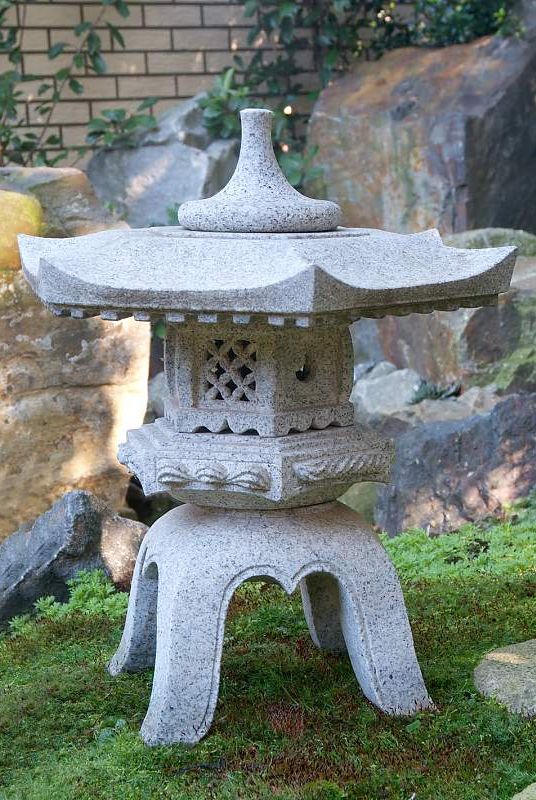
It is easy to process, it can be sawed with a regular saw, and given any shape using a metal blade.
The block is easy to sand with both coarse and fine sandpaper. Then, when the flashlight is ready, it needs to be covered with a cement-adhesive solution so that the gas silicate does not absorb moisture and does not fall apart.

And after that you can choose the color acrylic paint and paint the lantern in the natural color of the stone. Please note: it is in natural, because colored flashlights Japanese garden can not be!




